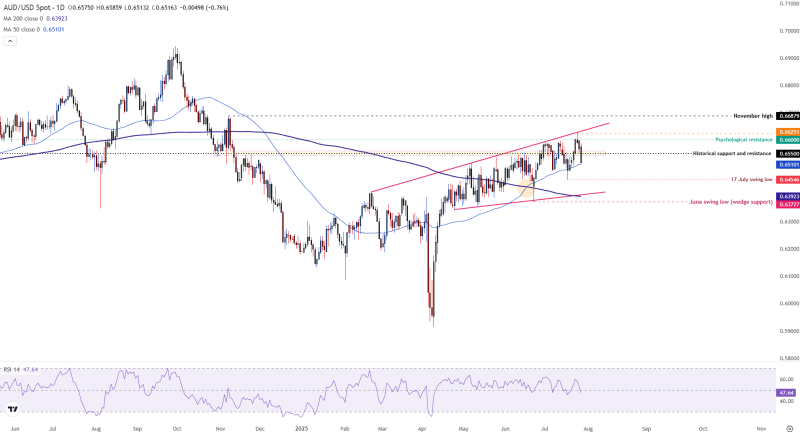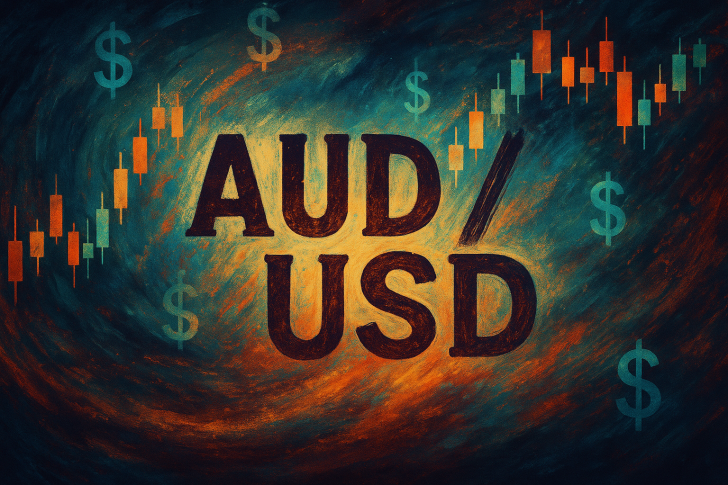The AUD/USD pair is getting hit hard today, dropping back under 0.6600 after reaching 0.6625 last Thursday – the highest we've seen all year. Classic profit-taking is kicking in as traders get nervous about Wednesday's Fed meeting.
It's typical forex behavior when uncertainty hits – dump the risky stuff, buy the dollar. The Aussie definitely counts as risky, especially with all the Fed talk about keeping rates high for longer. Nobody expects a rate cut Wednesday, but Powell's press conference could shake things up big time.
AUD/USD Technical Picture Looks Weak
The charts aren't pretty for the Aussie right now. That rejection at 0.6625 created a nasty long upper wick – buyers just couldn't hold those levels. Now it's sliding toward 0.6550 support, and if that breaks, things could get ugly fast.
We're looking at an ascending wedge pattern here, which usually breaks down rather than up. Next targets are the 50-day moving average at 0.6508, then the July low at 0.6454. Break the wedge base near 0.6372 and we're talking serious trend reversal territory.

The RSI has rolled over to 53 – not oversold yet but definitely losing steam. Resistance is now at 0.6600, then 0.6625, with the November high at 0.6687 as the longer-term level to watch.
AUD/USD Faces Fundamental Headwinds
The fundamentals aren't helping either. Australia's economy depends heavily on China buying their exports, but China's been struggling lately. That's bad news for commodity currencies like the AUD.
Then there's the rate differential. The Fed is talking tough about higher rates while the RBA has been way more cautious. Money flows where it gets paid more, and right now that's not Australia.
The whole risk-off mood in markets is another problem. When traders get scared, they dump currencies like the AUD and run to safe havens like the USD. With geopolitical tensions and economic uncertainty everywhere, it's not great timing for risk assets.
Wednesday's FOMC meeting is the key event. If Powell sounds more hawkish than expected, AUD/USD could drop even further. For now, the path looks down until we get clarity on Fed policy.
 Usman Salis
Usman Salis

 Usman Salis
Usman Salis


